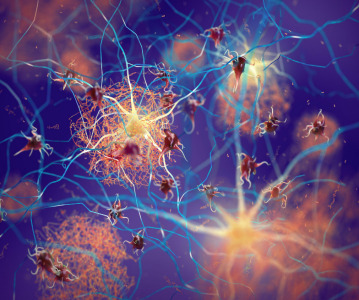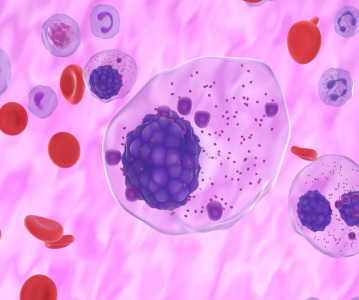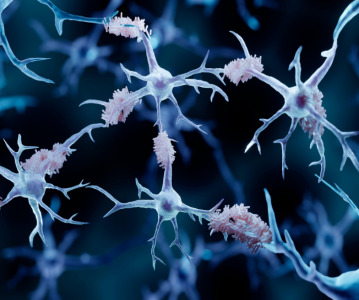Novartis Presents New Data from Large European Study Reinforcing the Benefit of First-Line Tasigna in Newly-Diagnosed Patients with CML

Novartis has announced results from the Phase IIIb ENEST1st study in over 1000 patients with newly-diagnosed, BCR-ABL positive chronic myeloid leukemia (CML), confirming the benefits of first-line Tasigna treatment seen in earlier trials. The final results of this large study, conducted in 26 European countries, were presented at the 20th Congress of the European Hematology Association (EHA) in Vienna.
"These results show patients with Bmyeloid leukemia, Tasigna, CR-ABL positive CML in chronic phase receiving first-line treatment with Tasigna achieved rapid and high rates of molecular response and had a very low rate of progression to advanced disease," said Dr Andreas Hochhaus, Head of the Department of Hematology and Medical Oncology, Jena University Hospital, Germany. "These findings from 26 countries, which are a collaboration of 307 trial sites and 14 standardized laboratories monitoring the incidence of MR4.0 as primary endpoint, confirm and complement data from the pivotal ENESTnd trial."
The primary endpoint in ENEST1st was the rate of Molecular Response 4 (MR4.0) at 18 months. MR4.0, which is a 4 log reduction in BCR-ABL, represents a very low level of detectable BCR-ABL, the cause of Ph+ CML (measured as BCR-ABL <=0.01% on the International Scale [BCR-ABLIS] or undetectable BCR-ABL in cDNA with >=10,000 ABL transcripts).
At 18 months, 38.4% of Tasigna-treated patients (n=1,052) reached MR4.0. These data demonstrate high rates of early and deep molecular response with Tasigna. The rate of disease progression in the study was low, with six patients, or 0.6%, advancing to the accelerated phase/blast crisis stage of the disease. Despite the higher median age of patients in ENEST1st than in previous Tasigna studies, the safety results were consistent with the known safety profile of Tasigna. The most common adverse events (AE) were rash, itch and headache. Grade 3/4 AEs related to hepatotoxicity and pancreatitis occurred in 0.4% and 0.6% of patients, respectively. Grade 3/4 thrombocytopenia (low blood platelet count) and neutropenia (low white blood cell count) occurred in 6.0% and 4.8% of patients, respectively.
"Our commitment to CML remains strong and is exemplified by this trial, as well as further study of deep molecular response with Tasigna and the possibility for some patients with Ph+ CML to stop their treatment and achieve sustained treatment-free remission," said Bruno Strigini, President, Novartis Oncology. "In addition, we are developing new compounds with different mechanisms of action, which could help address the resistance to existing medications that some patients experience."
Related News
-
News BioNTech to begin mRNA vaccine manufacturing in Rwanda by 2025
German biotechnology company BioNTech has stated their intentions to begin production at their mRNA vaccine factory in Rwanda by 2025, which will mark the first foreign mRNA vaccine manufacturing site on the continent of Africa. -
News Identifying Alzheimer’s Disease biomarker proteins with whole blood tests
A University of Manchester spin-out pharmaceutical company, PharmaKure, has reported successful study results for the quantification of Alzheimer’s Disease biomarker proteins with a whole blood test. -
News Bill & Melinda Gates Foundation to boost mRNA vaccine initiatives in Africa with USD $40m
To address vaccine inequality and accessibility issues, the Bill & Melinda Gates Foundation aims to deliver USD $40m to various biotech companies and vaccine manufacturers in support of mRNA vaccine development. -
News CPHI Podcast Series: Exploring neurological frontiers in Alzheimer's and beyond
The next episode of the CPHI Podcast Series delves into the science and background behind some recent developments in the field of Alzheimer's disease and neurological disorders. -
News Is patient centricity the future of pharmaceutical manufacturing?
In this interview with Sandra Sánchez y Oldenhage, President of PharmAdvice, she speaks to the importance of considering patients in the manufacturing stages of the pharmaceutical supply chain, and how it can redefine healthcare. -
News CPHI Podcast Series: How to leverage AI for Drug Discovery
Artificial intelligence is the topic of debate in the latest episode from the CPHI Podcast Series, where Digital Editor Lucy Chard speaks with Bill Whitford of DPS Group about the integration of AI in healthcare. -
News Pfizer forges ahead with blood cancer therapy after approval from FDA
Pfizer gains accelerated approval from the US FDA for their new bispecific antibody therapy for multiple myeloma, set to address an unmet need for patients. -
News Alzheimer's drug donanemab deemed effective in landmark clinical trial
Results from the TRAILBLAZER-ALZ 2 Randomised Clinical Trial into the use of donanemab to treat early symptoms of Alzheimer’s disease have been analysed.
Position your company at the heart of the global Pharma industry with a CPHI Online membership
-
Your products and solutions visible to thousands of visitors within the largest Pharma marketplace
-
Generate high-quality, engaged leads for your business, all year round
-
Promote your business as the industry’s thought-leader by hosting your reports, brochures and videos within your profile
-
Your company’s profile boosted at all participating CPHI events
-
An easy-to-use platform with a detailed dashboard showing your leads and performance







